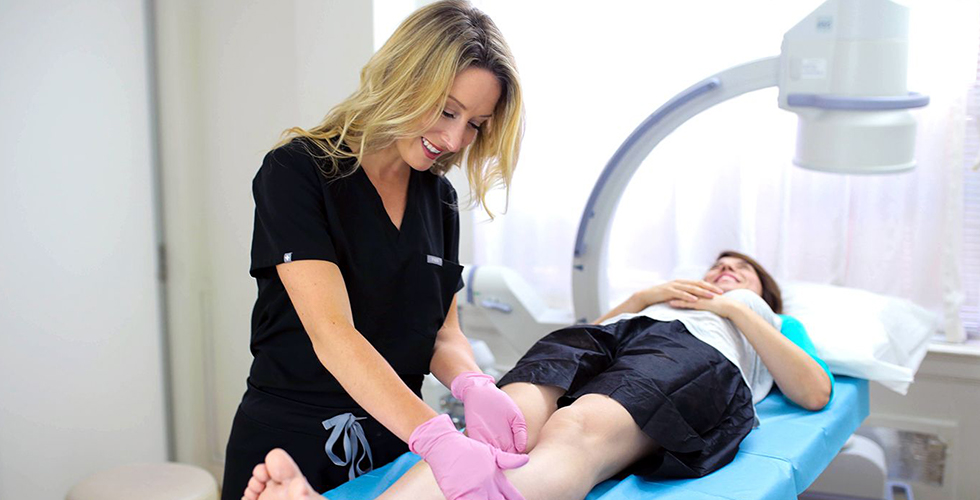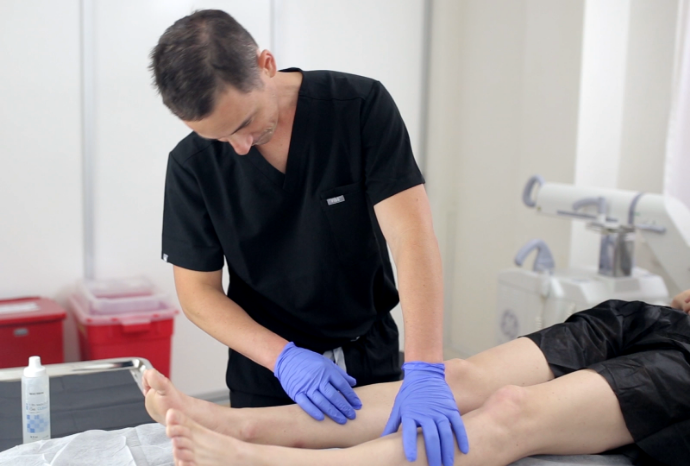Advantages of Visiting a Vein Clinic: Is it Worth Getting Varicose Veins Removed?
Varicose veins are more than just a cosmetic concern for many individuals. These enlarged, twisted veins often cause discomfort and can lead to serious health issues if left untreated. For those considering medical intervention, the decision to visit a what does a vein clinic do and remove varicose veins may seem daunting. However, the benefits of taking action are significant, and understanding what a vein clinic does can help you make an informed choice.
What Does a Vein Clinic Do?
A vein clinic is a specialized medical facility that focuses on diagnosing and treating vein disorders, including varicose veins, spider veins, and other venous insufficiencies. The primary goal of a vein clinic is to offer minimally invasive treatments to improve vein function, alleviate discomfort, and enhance the patient’s quality of life.

Here are some of the main services provided at a vein clinic:
1. Diagnosis of Venous Issues
The first step in any vein treatment process is a thorough evaluation. At a vein clinic, specialists use advanced diagnostic tools like ultrasound imaging to assess the severity of your vein issues. This helps to identify the underlying cause of Is it worth getting varicose veins removed?, such as faulty valves or blood pooling. A proper diagnosis is essential for creating an effective treatment plan tailored to your specific needs.
2. Non-Invasive Treatments
Many vein clinics offer non-invasive or minimally invasive treatments to address varicose veins. These treatments are generally performed on an outpatient basis, meaning you can return home the same day without the need for long recovery periods. Some of the most common procedures include:
- Sclerotherapy: This procedure involves injecting a solution directly into the varicose vein, causing it to collapse and eventually fade.
- Endovenous Laser Treatment (EVLT): In this technique, laser energy is used to seal off the problematic vein.
- Radiofrequency Ablation (RFA): Similar to EVLT, RFA uses heat to close off the vein, allowing blood to be redirected through healthier veins.
3. Surgical Options
In some cases, non-invasive treatments may not be sufficient, and a surgical option like vein stripping or phlebectomy may be recommended. However, these are usually reserved for more severe cases of varicose veins and are less common due to the effectiveness of modern, less invasive methods.
4. Post-Treatment Care and Prevention
A vein clinic doesn’t just focus on treating existing varicose veins; it also emphasizes preventive care. Specialists at the clinic will provide guidance on lifestyle changes, such as exercise and dietary adjustments, to reduce the risk of developing new varicose veins. Compression stockings and other forms of supportive care may also be recommended to enhance circulation and maintain the results of your treatment.
Is It Worth Getting Varicose Veins Removed?
Now that we understand what a vein clinic does, the next question to address is whether it's worth getting varicose veins removed. The answer largely depends on your specific condition and how varicose veins affect your life. However, there are several key advantages to having varicose veins treated, especially when considering the potential long-term benefits.
1. Improved Physical Comfort
One of the most immediate advantages of getting varicose veins removed is the relief from physical discomfort. Varicose veins often cause symptoms like:
- Leg pain or heaviness
- Swelling in the lower legs and ankles
- Throbbing or burning sensations
- Itching around the affected veins
Over time, these symptoms can significantly impact your daily life, making it difficult to stand or walk for extended periods. By removing varicose veins, you can alleviate these uncomfortable symptoms, allowing for improved mobility and a better quality of life.
2. Enhanced Aesthetic Appearance
While varicose veins can be physically uncomfortable, they are also a cosmetic concern for many people. These bulging, discolored veins can affect your confidence, especially if they are visible on your legs or other exposed areas. Removing varicose veins through procedures like sclerotherapy or EVLT can improve the appearance of your skin, giving you smoother, more evenly toned legs.
3. Prevention of Complications
Leaving varicose veins untreated can lead to more serious complications over time. Some potential health issues that can arise include:
- Venous Ulcers: These are open sores that can develop on the skin near varicose veins and are often difficult to heal.
- Deep Vein Thrombosis (DVT): Varicose veins can increase the risk of developing blood clots, which can be life-threatening if they travel to the lungs.
- Bleeding: Varicose veins can sometimes burst, leading to significant bleeding.
By opting to have varicose veins removed, you reduce the risk of these complications and protect your long-term vascular health.
4. Improved Circulation
Varicose veins occur when the valves within the veins malfunction, causing blood to pool and creating pressure. Removing or closing off these damaged veins allows blood to flow more efficiently through healthy veins. This improves overall circulation in your legs, reducing symptoms like swelling and heaviness.
Improved circulation can also help with the prevention of other venous disorders and encourage healthier leg function, which is especially important as you age.
5. Quick Recovery and Minimal Downtime
One of the major advantages of modern vein treatments is the minimal downtime required. Procedures like EVLT or sclerotherapy can be completed in under an hour, and most patients can return to their normal activities within a day or two. This makes the removal of varicose veins a convenient option for those with busy lifestyles who don’t want to take time off for extensive recovery periods.
How to Know if You Need Varicose Veins Removed
If you’re unsure whether you should get varicose veins removed, there are several factors to consider:
- Severity of Symptoms: If you’re experiencing pain, swelling, or other discomforts that affect your daily life, it may be time to seek treatment.
- Cosmetic Concerns: For many, the appearance of varicose veins is enough of a reason to pursue removal. If your veins are affecting your confidence, a visit to a vein clinic can help you explore treatment options.
- Potential Health Risks: If you have a family history of venous disorders or have been diagnosed with conditions like DVT, treating varicose veins may be an important preventive measure.
Ultimately, the decision to remove varicose veins is personal and should be made in consultation with a specialist at a vein clinic. These experts can assess your specific situation and recommend the best treatment plan to meet your needs.
Conclusion:
Visiting a vein clinic and removing varicose veins can provide numerous benefits, including improved comfort, better appearance, and a lower risk of complications. Whether you’re dealing with painful symptoms or simply want to enhance your confidence, modern vein treatments offer a safe, effective solution. With minimally invasive options and quick recovery times, the advantages of seeking treatment for varicose veins are clear—making it well worth the investment for many individuals.
In conclusion, understanding what does a vein clinic do and whether it is worth getting varicose veins removed comes down to prioritizing your health and well-being.

Comments
Post a Comment